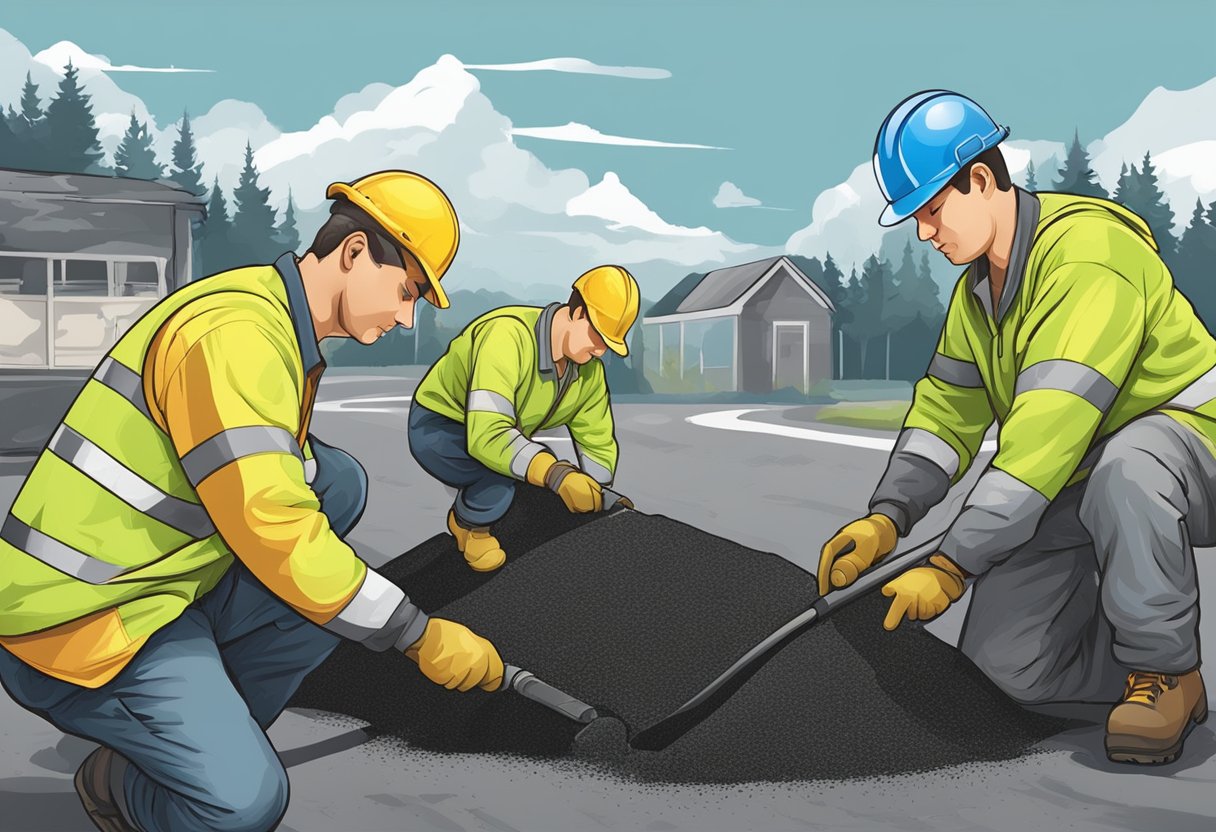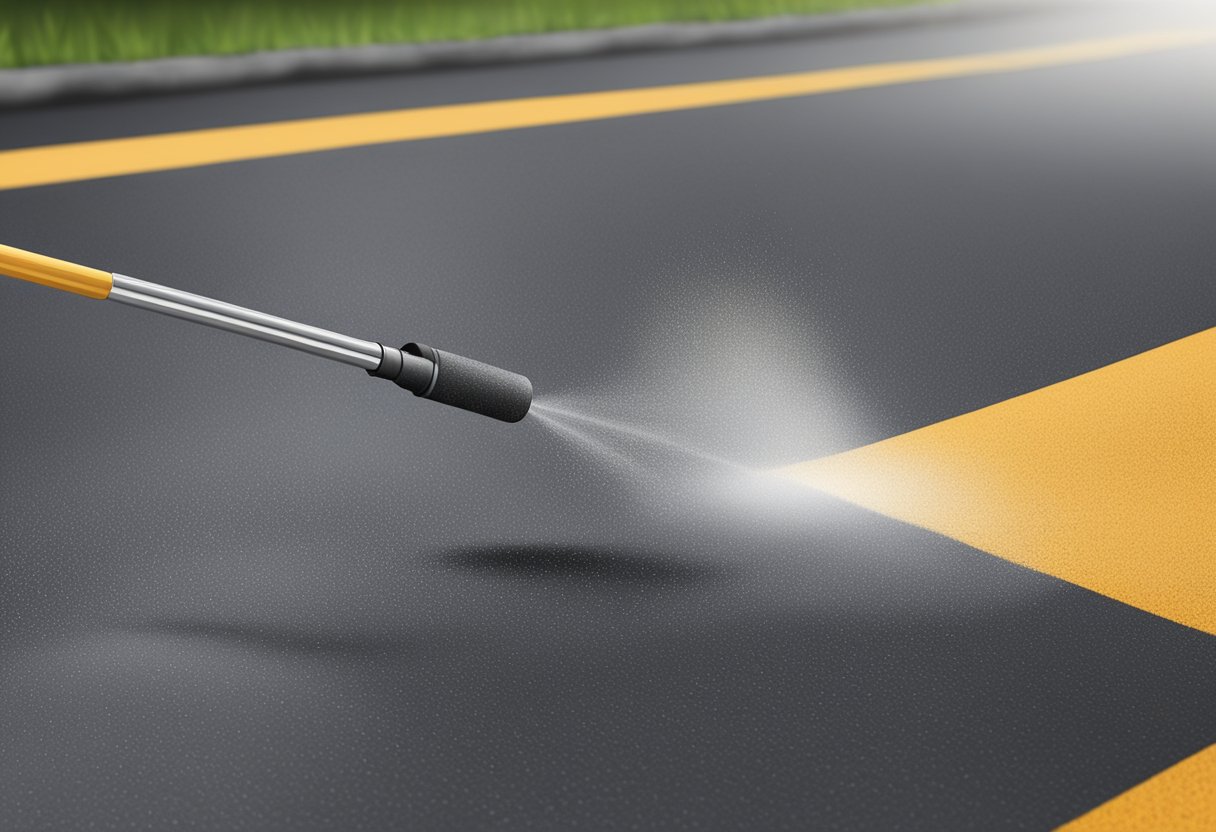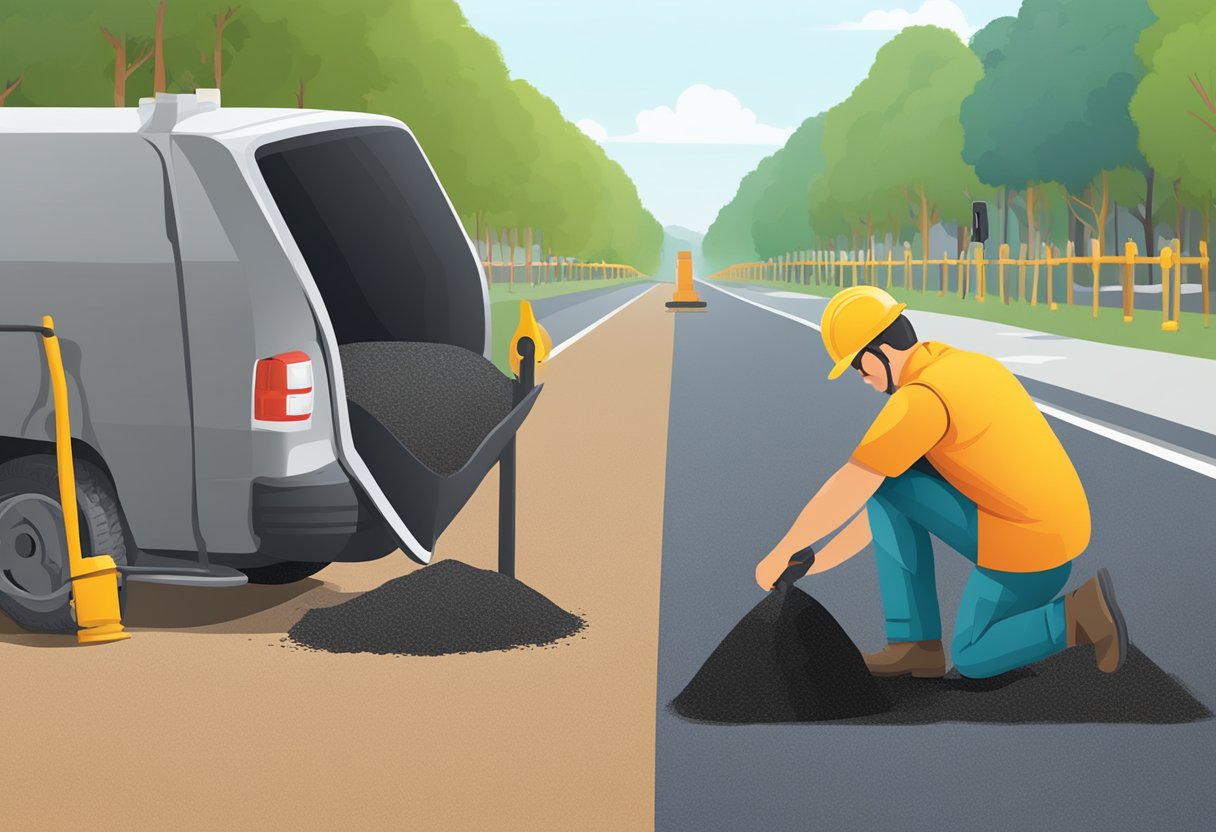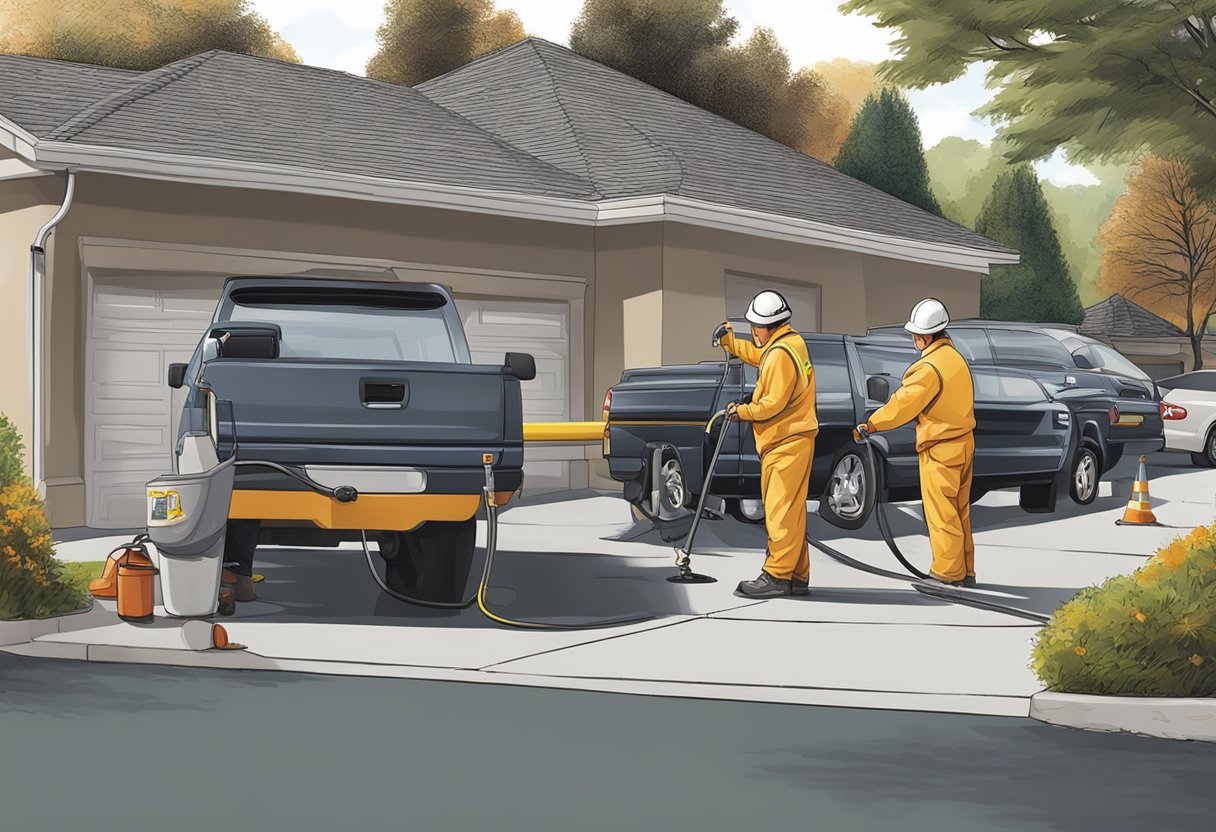Asphalt Maintenance: Tips for Prolonging Your Pavement’s Life
Asphalt is a popular choice for paving driveways, parking lots, and roads due to its durability and cost-effectiveness. However, over time, asphalt can deteriorate and require maintenance to ensure its longevity. Asphalt maintenance involves a variety of tasks, such as crack sealing, sealcoating, and patching, that help prevent further damage and extend the life of the asphalt.
Crack sealing is one of the most important aspects of asphalt maintenance. As asphalt ages, it can develop cracks that allow water to seep in and cause further damage. By sealing these cracks, water is prevented from penetrating the surface and causing more extensive damage. Sealcoating is another important component of asphalt maintenance. It involves applying a protective coating to the surface of the asphalt, which helps prevent damage from UV rays, water, and other elements.
Regular asphalt maintenance is essential to ensure the longevity of your pavement. By performing routine maintenance tasks, such as crack sealing and sealcoating, you can help prevent further damage and extend the life of your asphalt. Contact a professional asphalt contractor to discuss your maintenance needs and ensure your pavement stays in top condition for years to come.
Related Posts:
Understanding Asphalt
Asphalt is a widely used material in the construction industry for paving roads, parking lots, and driveways. It is a mixture of aggregates, binder, and filler, which is laid down in layers and compacted to form a smooth surface. The binder used in asphalt is typically bitumen, a sticky, black, and highly viscous liquid that is derived from crude oil.
The design of asphalt mixtures is critical to ensuring the longevity and durability of the pavement. The mix design takes into account factors such as traffic volume, climate, and the type of aggregate used. The goal is to create a mixture that can withstand the stresses of traffic and weather while maintaining its structural integrity.
During the construction process, the asphalt mixture is heated to a high temperature and then laid down in layers using a paving machine. The layers are then compacted using heavy rollers to ensure that the pavement is dense and strong.
One type of asphalt mixture that is becoming increasingly popular is asphalt emulsion. This mixture uses an emulsifying agent to mix the bitumen and aggregates, which results in a more environmentally friendly and cost-effective pavement.
Overall, understanding the properties and construction of asphalt is crucial for ensuring the longevity and durability of paved surfaces.
Related Posts:
Importance of Maintenance
Asphalt maintenance is crucial for the longevity and durability of any pavement. Regular maintenance can prolong pavement life and save money in the long run. Neglecting maintenance can lead to costly repairs and even complete replacement of the pavement.
There are many benefits to maintaining asphalt pavement. Regular maintenance can prevent cracks and potholes from forming, which can cause damage to vehicles and create safety hazards for pedestrians. It can also prevent water from seeping into the pavement, which can cause erosion and weakening of the base layers.
Maintenance can also improve the appearance of the pavement. Regular sweeping and cleaning can remove debris and stains, making the pavement look new and well-maintained. This can improve the curb appeal of the property and create a positive impression on visitors and customers.
Overall, the importance of asphalt maintenance cannot be overstated. It is essential for the safety, durability, and longevity of the pavement. By investing in regular maintenance, property owners can save money and avoid costly repairs in the future.
Related Posts:
Types of Asphalt Damage
Asphalt pavement is durable, but it can still be damaged over time. Here are some common types of asphalt damage:
Cracks
Cracks can form in asphalt pavement due to various reasons, including weather changes, heavy traffic, and aging. Small cracks can be repaired with crack sealing, but larger cracks may require patching.
Potholes
Potholes are holes that form in the pavement due to water seeping into the asphalt and freezing. Potholes can be dangerous for drivers and pedestrians and should be repaired as soon as possible. Pothole patching involves cutting away the damaged area and filling it with a patch.
Alligator Cracks
Alligator cracks, also known as alligator cracking, resemble the skin of an alligator and are caused by a combination of factors, including heavy traffic, aging, and poor drainage. Alligator cracks can be repaired with crack sealing or patching, depending on the severity of the damage.
Depressions
Depressions are low spots in the pavement that can hold water and cause further damage. Depressions can be caused by heavy traffic or poor pavement installation. Depressions can be repaired with patching or leveling.
Related Posts:
Asphalt Repair Techniques
Asphalt repair is an essential part of asphalt maintenance, and there are several techniques that can be used to repair asphalt. The most common asphalt repair techniques include repairing cracks, patching potholes, and filling cracks.
Repairing Cracks
Cracks in asphalt can occur due to various reasons such as weather changes, heavy traffic, and poor maintenance. One of the most common techniques used to repair cracks is crack sealing. Crack sealing is the process of filling cracks with a hot rubberized material to prevent water from seeping in and causing further damage. Another technique used to repair cracks is crack filling. Crack filling is the process of filling cracks with a cold asphalt patch to prevent water from seeping in and causing further damage.
Patching Potholes
Potholes are a common problem in asphalt pavements and can be caused due to various reasons such as heavy traffic, weather changes, and poor maintenance. Patching potholes involves filling the potholes with hot mix asphalt to restore the pavement’s surface.
Filling Cracks
Filling cracks is another technique used to repair asphalt. The process involves filling the cracks with a hot rubberized material to prevent water from seeping in and causing further damage.
Cold Asphalt Patch
Cold asphalt patch is a type of asphalt that can be used to repair small potholes, cracks, and other damages. The patch can be applied directly to the damaged area without the need for heating.
Overall, asphalt repair techniques are essential to maintain the integrity and longevity of asphalt pavements. It is important to choose the right technique based on the type and severity of the damage.
Related Posts:
Preventative Measures
Preventative measures are crucial to maintaining the longevity and durability of asphalt surfaces. These measures include sealing, sealcoating, chip seal, slurry seal, fog seal, and other forms of preventative maintenance.
Sealing involves applying a protective layer to the surface of the asphalt to prevent water and other elements from penetrating it. Sealcoating, on the other hand, is a more thorough process that involves applying a mixture of asphalt and other materials to the surface to protect it from wear and tear.
Chip seal is a preventative measure that involves applying a layer of gravel to the surface of the asphalt to improve its traction and durability. Slurry seal is similar to chip seal, but it involves applying a mixture of asphalt and other materials to the surface to create a smooth, even surface. Fog seal is a preventative measure that involves applying a thin layer of asphalt to the surface to improve its appearance and durability.
Overall, preventative maintenance is essential to keeping asphalt surfaces in good condition. By taking these measures, you can extend the life of your asphalt surfaces and save money in the long run.
Related Posts:
Effect of Weather and Climate
Asphalt maintenance is heavily influenced by weather and climate conditions. Extreme temperatures, rain, and snow can all impact the quality of asphalt pavement. For example, in hot summer months, the heat can cause the asphalt to expand, leading to cracks and potholes. On the other hand, in cold winter months, the asphalt can contract, causing it to crack and break apart.
The climate of a region can also affect asphalt pavement. In colder climates, where there is frequent snow and ice, salt and other chemicals are often used to melt the ice on the roads. These chemicals can cause damage to the asphalt, leading to the need for more frequent repairs.
To ensure the longevity of asphalt pavement, it is important to take into account the weather and climate conditions of the area. This can help in selecting the appropriate materials and techniques for asphalt maintenance.
In summary, weather and climate play a crucial role in the maintenance of asphalt pavement. It is important to consider these factors when planning for repairs and maintenance.
Related Posts:
Cost Considerations
When it comes to asphalt maintenance, cost is an important consideration. There are several factors that can influence the cost of asphalt maintenance, including the size of the project, the type of repair needed, and the condition of the existing pavement.
One of the most cost-effective ways to maintain asphalt is through regular maintenance, such as crack sealing and sealcoating. These preventative measures can help extend the life of your asphalt and prevent more costly repairs down the road.
However, if your asphalt is already in poor condition, more extensive repairs may be necessary, such as patching or resurfacing. These repairs can be more costly, but they are often necessary to prevent further damage and maintain safety.
It’s important to work with a reputable asphalt contractor who can provide a detailed estimate and explain the costs associated with each repair option. This can help you make an informed decision and avoid any unexpected expenses.
Related Posts:
Professional vs DIY Maintenance
Maintaining asphalt surfaces is crucial to ensure their longevity and durability. Property owners can either opt for professional maintenance or do it themselves. Both options have their advantages and disadvantages.
DIY Maintenance
DIY maintenance involves property owners performing the maintenance tasks themselves. This option is ideal for those who have a limited budget and want to save money. DIY maintenance can include patching up small cracks, cleaning debris, and applying sealant.
However, DIY maintenance can be time-consuming and requires a certain level of expertise. If the maintenance is not done correctly, it can lead to further damage and costly repairs in the future.
Professional Maintenance
Professional maintenance involves hiring experienced contractors to perform the maintenance tasks. This option is ideal for those who want to ensure that their asphalt surface is maintained correctly and efficiently. Professional maintenance can include crack sealing, pothole repair, and resurfacing.
Professional maintenance can be expensive, but it is worth the investment. Contractors have the necessary equipment and expertise to perform the maintenance tasks correctly, ensuring that the asphalt surface lasts longer.
In summary, both DIY and professional maintenance have their advantages and disadvantages. Property owners should consider their budget, time, and expertise before deciding which option to choose.
Related Posts:
Maintaining Asphalt Driveways and Parking Lots
Asphalt driveways and parking lots are a common sight in many neighborhoods and commercial areas. They are durable and can last for many years with proper maintenance. However, neglecting to maintain them can lead to costly repairs and replacements.
Regular maintenance of asphalt driveways and parking lots involves cleaning, repairing, and sealing. Cleaning involves removing debris, dirt, and leaves that can accumulate on the surface. This can be done using a broom or a leaf blower. For tougher stains, a pressure washer can be used.
Repairing asphalt driveways and parking lots involves fixing cracks and potholes. Cracks can be filled with crack filler, while potholes require more extensive repairs. It is important to address these issues as soon as possible to prevent them from getting worse.
Sealing is the final step in maintaining asphalt driveways and parking lots. It involves applying a sealant to the surface to protect it from the elements. This should be done every 2-3 years to ensure maximum protection.
Regular maintenance of asphalt driveways and parking lots can extend their lifespan and save you money in the long run. It is important to hire a professional asphalt maintenance company to ensure that the job is done correctly.
Related Posts:
Frequently Asked Questions
What is asphalt sealcoating and why is it important?
Asphalt sealcoating is the process of applying a protective layer over the asphalt pavement surface. The sealcoat is usually a mixture of emulsified asphalt, water, and mineral fillers. The primary purpose of asphalt sealcoating is to protect the pavement from the harmful effects of weather and traffic. It prevents water from seeping into the pavement, which can cause cracks and potholes. It also protects the pavement from UV rays, which can cause the asphalt to become brittle and crack.
How often should asphalt maintenance and repair be performed?
The frequency of asphalt maintenance and repair depends on the condition of the pavement, the amount of traffic it receives, and the climate in the area. Generally, it is recommended to perform asphalt maintenance and repair every 3-5 years. However, in areas with harsh winters or heavy traffic, maintenance and repair may need to be done more frequently.
What are some common asphalt maintenance equipment?
There are several types of equipment used for asphalt maintenance, including:
- Crack sealing machines
- Pothole patching machines
- Sealcoating machines
- Asphalt recyclers
- Infrared heaters
Can asphalt driveway maintenance be done DIY?
Yes, some asphalt driveway maintenance tasks can be done DIY, such as cleaning the surface, filling small cracks with asphalt crack filler, and sealing the surface with a DIY sealcoat kit. However, more complex tasks, such as pothole repair and large crack filling, should be left to professionals.
What are some tips to prolong the life of asphalt?
Some tips to prolong the life of asphalt pavement include:
- Regular cleaning to remove debris and dirt
- Prompt repair of cracks and potholes
- Proper drainage to prevent water from pooling on the surface
- Regular sealcoating to protect the pavement from UV rays and weather
How long does asphalt need to cure before use?
The curing time of asphalt depends on several factors, such as the temperature, humidity, and thickness of the pavement. Generally, asphalt needs at least 24-48 hours to cure before it can be used for light traffic. Heavy traffic should be avoided for at least 72 hours after the asphalt has been laid.












